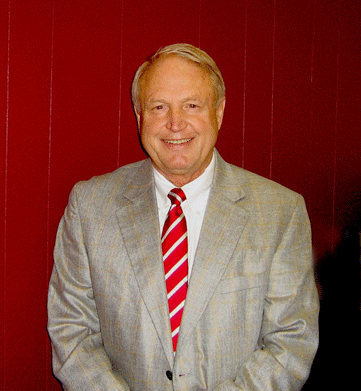An Executive View: Dr. Heinz G. Buschang, Formerly of Kodak
In the early 1980s when Heinz G. Buschang first heard about behavioral management, he wasn’t impressed. Aubrey Daniels, founder of Aubrey Daniels International (ADI), and several associates had presented the science of behavior as applied to leadership strategies to a management group at Kodak Colorado. As a department manager (at that time) who attended the session, Buschang remembers, “I was one of the skeptics.” Even after completing a two-week training session, Buschang wasn’t sold on the process that focuses on identifying, measuring, providing feedback, and reinforcing the human behaviors that determine the success of any endeavor—business or otherwise. “The Colorado division gave us a choice about whether we wanted to do this in our groups. I initially said no. And so I was a hold-out,” he says.
The “Aha” Moment
An undergraduate degree in chemistry and physics, an MBA emphasizing management and finance, and a leadership position as a Marine in Vietnam, buttressed Buschang’s view that this behavioral approach was all about the soft stuff. His opinion was that most reported successes attributed to using this approach lacked important functional impact. “My thinking was that you can do a lot of wonderful things but if you are not working on improving a bottleneck operation, the gains are sort of an illusion, because nothing really changes at the bottom line. Once I really understood that, I said ‘Aha, now I know how to focus this,’” he explains, adding, “Now I also know that you don’t have to be strategic early on, because people need to learn, get comfortable, and experience some successes early on. But for this technology to really impact the bottom line, you have to focus it on things that truly make a difference.” Shortly thereafter, as a committee member working on a behavior-based compensation model, Buschang’s enthusiasm escalated, “I realized I could really create some benefits for Kodak. That’s when I jumped into this full bore.”
Live and Learn

- Implemented Lean Manufacturing and reduced in-process inventories by over $100 million per year
- Increased process reliability to achieve 99 percent on-time delivery to internal customers
- Reduced chemical and product waste by $120 million
- Reduced major quality incidents (defined by returned product) to zero
- Negotiated and coordinated product loading strategies among the major manufacturing plants worldwide
- Implemented statistical process control strategy that became the model for other Kodak manufacturing areas
- Championed technical improvements resulting in a 40 percent capacity increase in the first year and increased productivity of several hundred million dollars
Sharing the Science
 As his retirement with Kodak approached, Buschang knew that he wasn’t ready to rest. “Stopping is boring,” he comments. So he started his own behavioral consulting firm, HGB Associates, in which he provided one-on-one executive coaching for linking leadership practices to the attainment of business results. Once again, this new turn in his career lead to a series of successes:
As his retirement with Kodak approached, Buschang knew that he wasn’t ready to rest. “Stopping is boring,” he comments. So he started his own behavioral consulting firm, HGB Associates, in which he provided one-on-one executive coaching for linking leadership practices to the attainment of business results. Once again, this new turn in his career lead to a series of successes:- Leading the design and implementation of a refinery-wide culture change of a large oil refinery
- Working with a global engineering and construction company’s European, African, and Asian divisions to improve the business and leadership skills of the regional president and top 30 executives
- Designing a comprehensive Performance Management system for an international company that is currently implemented worldwide
- Achieving a substantial, long-term reduction in the rate of motor vehicle accidents (50 percent within six months) of a U.S. petroleum company in Nigeria
The Leadership Blind Spot
 Leadership’s lack of self-examination is another business element that Buschang sees as remaining “pretty much the same” across the board. “I don’t think we ever, ever had an engagement with somebody without there being a need for better leadership,” he comments. “They always state their problems around symptoms. We can’t quite implement our strategy or we think there seems to be a morale problem or our performance could be better in certain areas, or we have a safety issue. And those things never turn out to be the main problems; they always turn out to be a gap in leadership.
Leadership’s lack of self-examination is another business element that Buschang sees as remaining “pretty much the same” across the board. “I don’t think we ever, ever had an engagement with somebody without there being a need for better leadership,” he comments. “They always state their problems around symptoms. We can’t quite implement our strategy or we think there seems to be a morale problem or our performance could be better in certain areas, or we have a safety issue. And those things never turn out to be the main problems; they always turn out to be a gap in leadership. “It’s a blind spot that organizations have. We all think we hire the best people; we hire good leaders, and all of that. Yet there’s that blind spot about what really is good leadership and differentiating between just good leadership that gets results and recognizing how the results are attained, so that performance is long-term, sustainable. This is one of the most common issues in organizations, even at the university level.”
Teaching from Experience
 Speaking of the university level . . . several years ago, Dr. Buschang accepted the challenge of teaching for Regis University’s School of Management, based in Denver, Colorado. As primarily an online professor, he had the flexibility to continue his consulting work and he built behavioral principles into his material whenever appropriate. Currently, he is the Dean of RU’s School of Management, the largest school on a campus of approximately 5,000 students. He is also the Acting Academic Dean of the College for Professional Studies which currently has well over 10,000 students.
Speaking of the university level . . . several years ago, Dr. Buschang accepted the challenge of teaching for Regis University’s School of Management, based in Denver, Colorado. As primarily an online professor, he had the flexibility to continue his consulting work and he built behavioral principles into his material whenever appropriate. Currently, he is the Dean of RU’s School of Management, the largest school on a campus of approximately 5,000 students. He is also the Acting Academic Dean of the College for Professional Studies which currently has well over 10,000 students. The irony of once being the hold-out for implementing behavioral change is not lost on Buschang. With an impressive career in industry, entrepreneurship, and now in higher learning—he recently received the Excellence in Teaching Award—Buschang doesn’t hesitate to accredit his evolution from skeptic to scholar. “Without the profound influence that Aubrey, his material, and the people associated with Aubrey have had on what I did at Kodak, my consulting practice, my career, and my life, I could never have accomplished anything close to what I did,” he says. “We have come full circle.”
Dr. Buschang on Business Ethics
Published November 1, 2010


